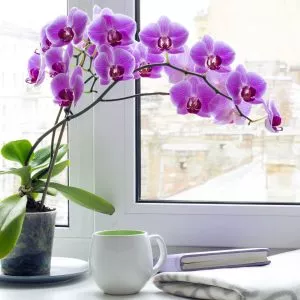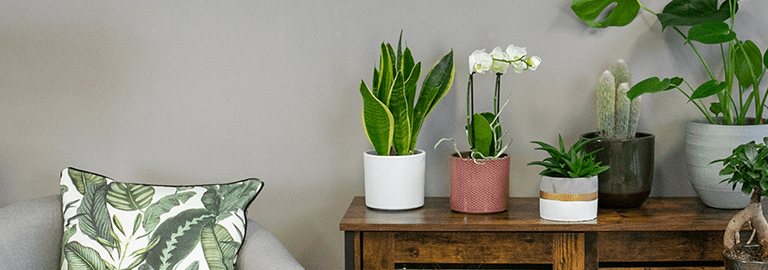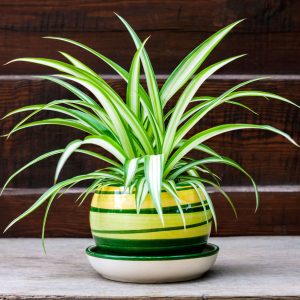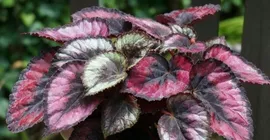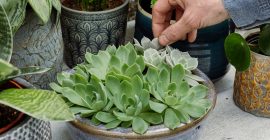It’s always a great time to invest in a new house plant or two, particularly when the garden is yet to feel the warmth of spring. So why not turn your home into an oasis of greenery? House plants are more popular than ever and many are easy to keep with a little care, adding colour and style to your rooms. They may even have health benefits, potentially improving air quality. Read below to find out about each of the most popular house plants to help you find the right one for your home.
Spider Plant (Chlorophytum comosum)
The Spider plant is an easy to care for plant with a striking appearance. Renowned for its resilience and adaptability, the spider plant thrives in various indoor environments, making it an ideal companion for both novice and experienced plant enthusiasts. Its arching, variegated leaves not only add a touch of greenery to any space but also serve as natural air purifiers, effectively removing common household pollutants. Spider plants are low-maintenance and forgiving, requiring minimal care while remaining highly tolerant of fluctuations in light and water conditions. What sets them apart is their ability to produce “pups” or baby plants, effortlessly propagating and allowing owners to share their greenery with friends or expand their own indoor garden. The Spider plant is also child and pet friendly too.
Snake Plant (Sansevieria trifasciata ‘Hahnii’)
Another one of the most popular house plants is also one of the easiest to grow and often maybe called ‘mother-in-law’s tongue’. A snake plant is a great choice for anyone likely to forget to water their plants occasionally as its succulent nature means it is tolerant of dry conditions. Snake plants release oxygen at night, making them very air purifying. A clump-forming plant, its stiff, bolt-upright, grey-green marbled leaves are margined with yellow and can be 1m tall. Plants are best on a sunny window sill although they will survive in quite shaded positions; they also revel in centrally-heated rooms. The key is to never overwater – they will not tolerate being waterlogged. Keep above 10C in winter and feed monthly with a feed. Occasionally, plants send up a spike of scented, greenish white flowers.
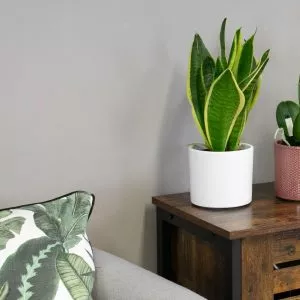
Peace Lily (Spathiphyllum wallisii)
Among the most popular and easy going of houseplants. This clump forming plant with handsome, lance-shaped green leaves is famed for its long-lasting white, arum-lily-like flowers which are held on stems above the foliage through summer. To flower well it must be fed regularly (every fortnight in summer) and kept moist. They dislike drying out so stand on a pebble tray. Keep plants in a bright place near a window but out of direct sun and maintain temperatures above 15C in winter. Look out for supersized S. ‘Mauna Loa’ with huge leaves and flowers, reaching 1.2m or tall or higher.
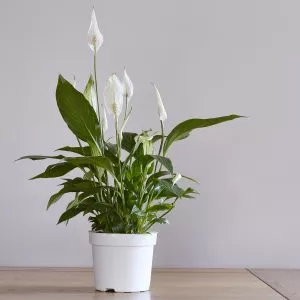
Rubber Plant (Ficus elastica)
A rubber plant is an old school favourite. The rubber plant is again popular for its handsome, glossy, dark green leaves. These are held on upright stems which emerge at the tips from a red sheath. Plants initially will be unbranched but as they mature side shoots appear. Give the plant a bright position – they will stand some indirect sun – and allow soil to dry slightly between waterings. Additionally, you should feed monthly with Houseplant Feed. Plants usually need tying to a cane as they get taller and make sure to repot regularly to stop them becoming top heavy. Winter temperatures should be above 12C – this plant enjoys humidity so stand on a pebble tray. There are some attractive variegated selections to try growing.
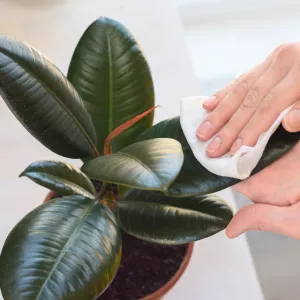
Chinese Money Plant (Pilea peperomioides)
This little plant is a relative newcomer on the houseplant scene and has become highly popular due it its unusual, almost circular, rather succulent-green leaves that look a bit like coins. Each leaf has a yellow dot where the leaf joins its stalk. These radiate from a central stem, which in time reaches around 30cm high. Chinese money plants are easy to grow: they are best on or near a bright windowsill away from direct summer sun. Plants like to dry out a bit between waterings so allow the compost surface to dry first, but water before leaves go floppy. Feed your plant every fortnight and keep above 12C in winter.
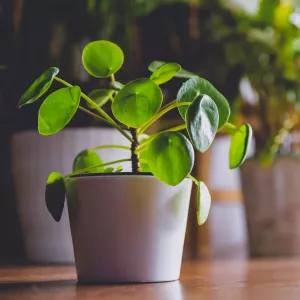
Swiss Cheese Plant (Monstera deliciosa)
A Swiss cheese plant is a 1970s favourite and is popular once more for its dramatic, perforated and lacerated foliage that gets bigger and better as it matures. The leaves can be up to around 1m long. It is a climbing plant, in the wild growing up trunks of jungle trees, and needs the support of a moss pole. Thick aerial roots are produced from stems and these should be fed into the plant’s pot. Monstera do best in a reasonably bright position out of direct sun. In deeper shade, leaves will be smaller and less impressive. Keep compost moist but not wet and also feed fortnightly in summer. Winter temperatures should be above 12C. This plant enjoys humidity, so stand on a pebble tray andalso keep away from radiators. Look out for desirable variegated selections and newly popular, miniature M. ‘Monkey Mask’.
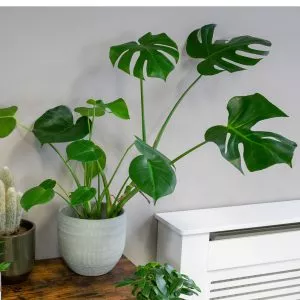
Pothos (Epipremnum pinnatum cv. ‘Aureum’ or E. aureum)
The pothos, often celebrated as one of the top houseplants, earns its popularity for a variety of reasons. Renowned for its resilience and ability to thrive in low-light conditions, the pothos is an excellent choice for both seasoned and budding plant enthusiasts. Its heart-shaped, glossy leaves not only bring a touch of elegance to any indoor space but also contribute to improved air quality by effectively removing common indoor pollutants. Pothos is incredibly low-maintenance, requiring minimal attention and tolerating irregular watering. Its trailing vines make it an adaptable and versatile plant. It can be displayed in hanging baskets, on shelves, or as a cascading element in various settings. Furthermore, pothos is known for its air-purifying properties, promoting a healthier and more comfortable living environment.
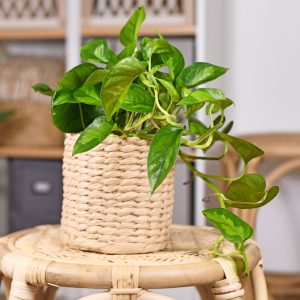
Aloe Vera (Aloe barbadensis miller)
Aloe vera emerges as a top-tier houseplant for its unique combination of ornamental appeal and practical benefits. Renowned for its distinctive, succulent leaves filled with soothing gel, aloe vera is not only visually striking but also serves as a natural remedy for minor burns and skin irritations. Its low-maintenance nature makes it an ideal choice for both seasoned gardeners and those new to plant care. This is because it thrives in well-draining soil and requires minimal watering. Additionally, aloe vera is an efficient air purifier, helping to remove toxins from indoor spaces. This multifunctional plant can thrive in various light conditions, from bright sunlight to indirect light, making it adaptable to different environments within the home. With its aesthetic appeal, healing properties, and ease of care, aloe vera stands out as a top houseplant.
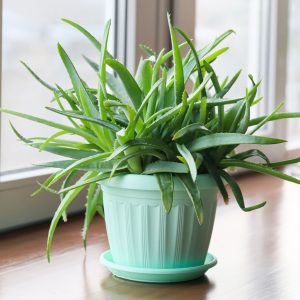
The Dragon Tree (Dracaena draco)
The dragon tree (Dracaena marginata) earns its status as a top houseplant for a compelling combination of aesthetic appeal and ease of care. With its slender, arching stems adorned with long, sword-shaped leaves featuring striking red or burgundy edges, the dragon tree adds a touch of elegance and drama to any indoor space. Highly adaptable, it can thrive in a variety of light conditions, from bright indirect light to lower light levels. This makes it suitable for different areas of the home. Beyond its decorative charm, the dragon tree is an excellent air purifier. It effectively removes indoor pollutants and promotes a healthier living environment. Known for its resilience and low-maintenance requirements, this houseplant is a favorite among those seeking a visually striking yet fuss-free addition to their indoor garden.
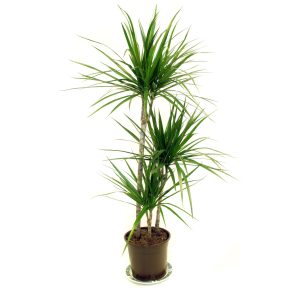
Moth Orchid (Phalaenopsis selections)
The most popular of house plants, these beautiful orchids are loved for their long-lasting flowers in a dazzling range of colours (although some such as those in blue have actually been dyed). Once the first flush of flowers fades, cut the flower spike back to a side shoot to ensure a further display. If the whole flower stem dies, remove it and wait for another to arise. The key to success with these plants is good light. A warm window sill out of direct summer sun is ideal. Maintain temperatures above 15C in winter. Orchids are grown in bark chips (Orchid Potting Mix) so water drains shaply from pots. Do not let your orchid stand in water for longer than an hour as roots will rot, and also avoid getting water in the crown of the plant. Feed plants regularly in summer with a good orchid feed.
Moth orchids will produce masses of grey/green aerial roots – these should be kept and allowed to do their thing. Look out for other orchids such as Oncidium and Zygopetalum.
